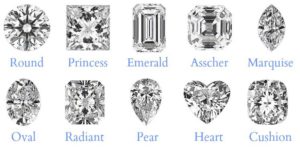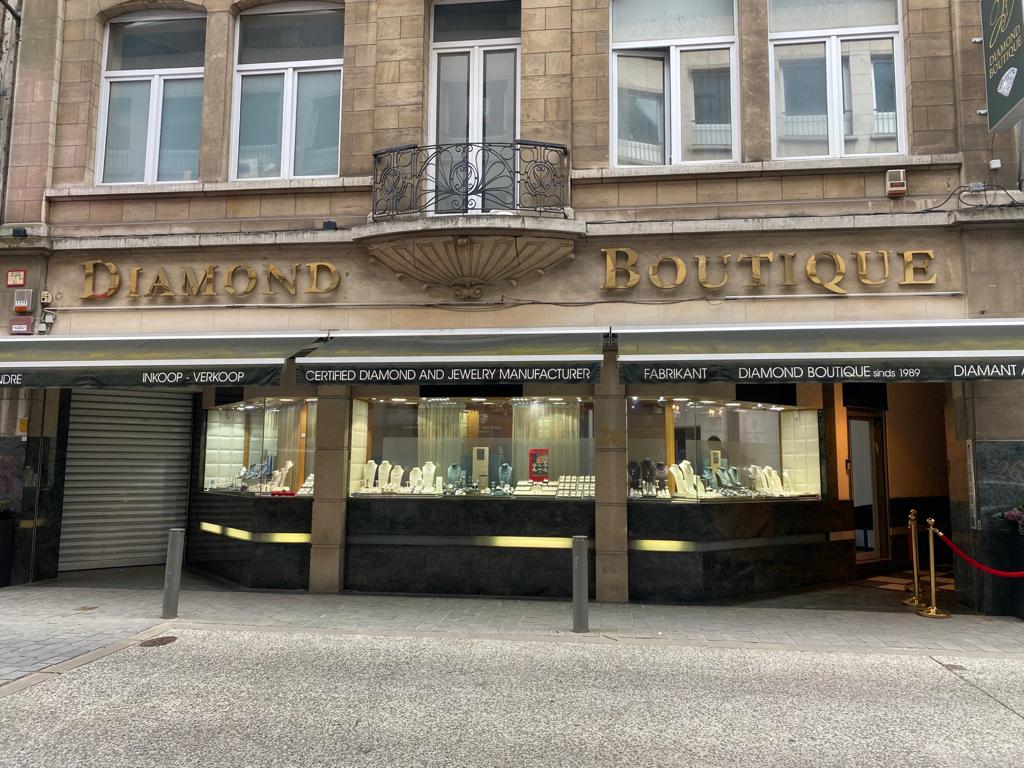The 4C's
1. CUT
A Diamond’s Cut Unleashes Its Lights.
Diamonds are renowned for their ability to transmit light and sparkle so intensely. We often think of a diamond’s cut as shape (round, heart, oval, marquise, pear), but a diamond’s cut grade is really about how well a diamond’s facets interact with light. Precise artistry and workmanship are required to fashion a stone so its proportions, symmetry and polish deliver the magnificent return of light only possible in a diamond. A diamond’s cut is crucial to the stone’s final beauty and value.

Diamond shapes

2. COLOR
Diamond Color Actually Means Lack of Color
The diamond color evaluation of most gem-quality diamonds is based on the absence of color. A chemically pure and structurally perfect diamond has no hue, like a drop of pure water, and consequently, a higher value. GIA’s D-to-Z diamond color-grading system measures the degree of colorlessness by comparing a stone under controlled lighting and precise viewing conditions to masterstones of established color value.
Many of these diamond color distinctions are so subtle that they are invisible to the untrained eye; however, these distinctions make a very big difference in diamond quality and price.
Tips to use color to find your perfect diamond
-
Compared to other shapes , brilliant round-cut diamonds appear brighter due to greater light reflection.
-
If you prefer a colorless diamond you should choose a stone in the D-F range.
-
Near colorless diamonds with a rating between G and J provide excellent values as their color is undetectable for the untrained eye. These diamonds are perfect to set in platinum or white gold metals.

3. CLARITY
Diamond Clarity Refers to the Absence of Inclusions and Blemishes.
Natural diamonds are the result of carbon exposed to tremendous heat and pressure deep in the earth. This process can result in a variety of internal characteristics called ‘inclusions’ and external characteristics called ‘blemishes.’
Evaluating diamond clarity involves determining the number, size, relief, nature, and position of these characteristics, as well as how these affect the overall appearance of the stone. While no diamond is perfectly pure, the closer it comes, the higher its value. Many inclusions and blemishes are too tiny to be seen by anyone other than a trained diamond grader. To the naked eye, a VS1 and an SI2 diamond may look exactly the same, but these diamonds are quite different in terms of overall quality. This is why expert and accurate assessment of diamond clarity is extremely important.

Tips to use the clarity to fit the diamond in your budget:
You can always choose an SI ranged diamond and take a higher color. SI ranged diamonds have small inclusions that are only visible with a loop, which means it will be hard to notice with the naked eye. this way you can go up in color and make your diamond look nicer even though you stay in your budget.
4. CARAT
To put it simply, diamond carat weight measures how much a diamond weighs.
A metric “carat” is defined as 200 milligrams. Each carat is subdivided into 100 ‘points.’ This allows very precise measurements to the hundredth decimal place. A jeweller may describe the weight of a diamond below one carat by its ‘points’ alone. For instance, the jeweller may refer to a diamond that weighs 0.25 carats as a ‘twenty-five pointer.’ Diamond weights greater than one carat are expressed in carats and decimals. A 1.08 carat stone would be described as ‘one point oh eight carats.’
All else being equal, diamond price increases with diamond carat weight because larger diamonds are rarer and more desirable. However, two diamonds of equal carat weight can have very different values (and prices) depending on three other factors of the diamond 4C's: , Clarity and CutColor
